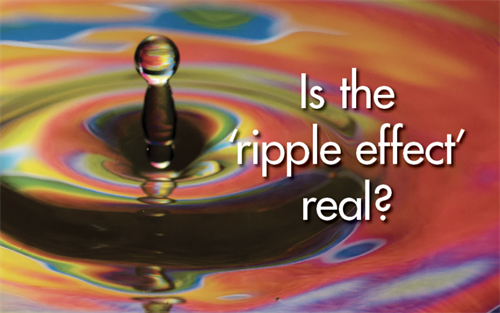posted by Zach Moning ON
Feb 23, 2018

The February edition of local arts and culture publication Movers & Makers features a cover story on a topic that may sound familiar: the Ripple Effect. The piece covers the local origins of the concept as it relates to the arts, as well as what it means and how it affects our arts and our community. It begins with a simple question: "Is the 'ripple effect' real?"
The idea of the Ripple Effect came from a study commissioned in 2010 by ArtsWave—known, at that time, as the Fine Arts Fund—after finding out that as many as 80% of donors were not regular subscribers to Cincinnati's largest arts organizations. Movers & Makers' Cindy Starr interviewed ArtsWave President & CEO Alecia Kintner to get the story. The big find? Most people who give to the arts do so, not necessarily because of a personal connection or enrichment, but because of their inherent value for the community.
This led to a paradigm shift in arts fundraising, and both the name "ArtsWave" and the concept of an arts-centric Ripple Effect arose as a result. Over the next several years, a new strategy for raising awareness and support for the arts was developed: The Blueprint for Collective Action in the Arts Sector, which spells out five key ways that the arts can successfully impact a community—specifically, the Greater Cincinnati region.
In short, we believe the arts can:
- Put Cincinnati on the map.
- Deepen roots in our region.
- Bridge cultural divides.
- Enliven neighborhoods.
- Fuel creativity and learning.
For the full story, including concrete examples of how ArtsWave and the 100+ arts organizations we support are fulfilling the promise of the Ripple Effect, read the Movers & Makers article.